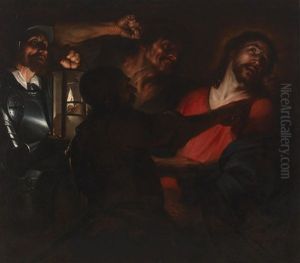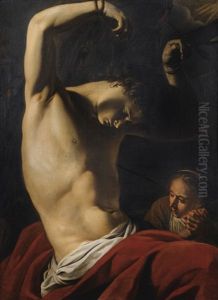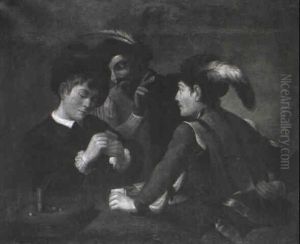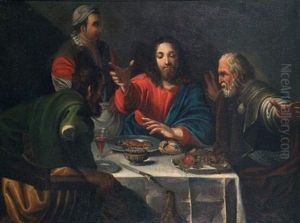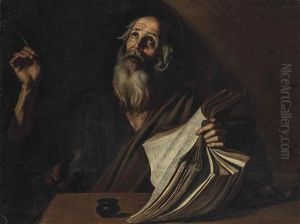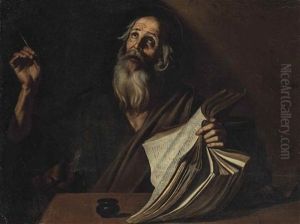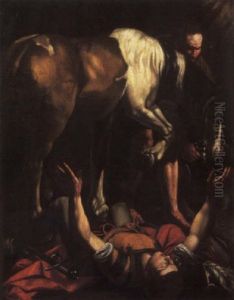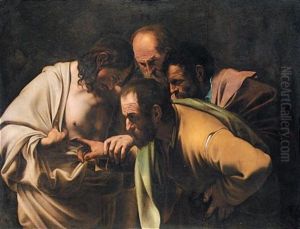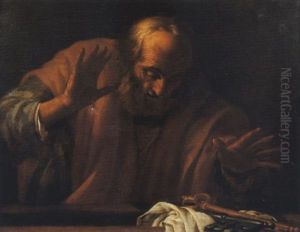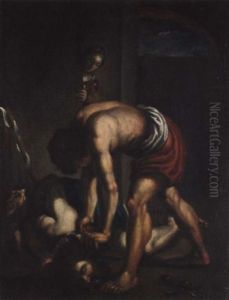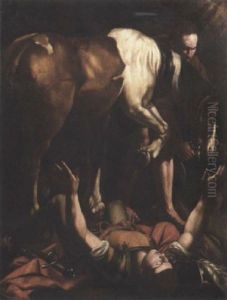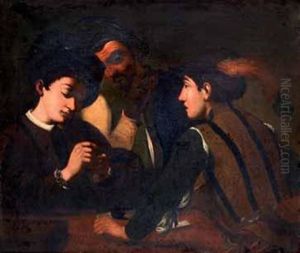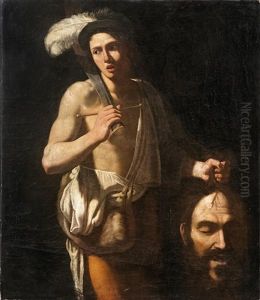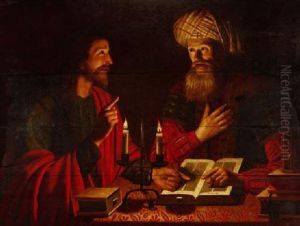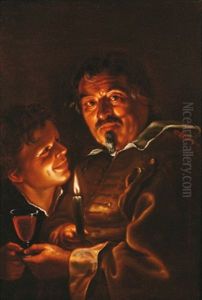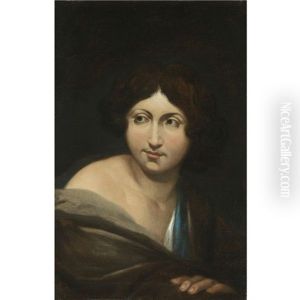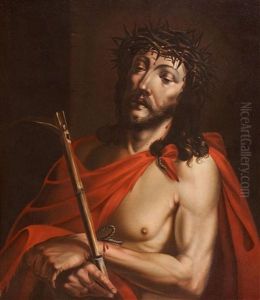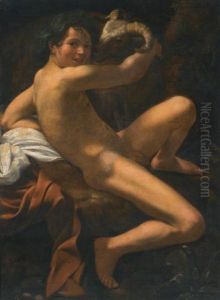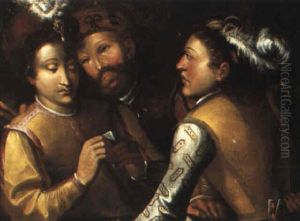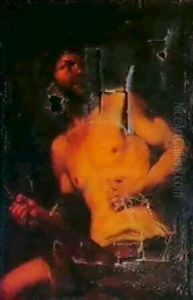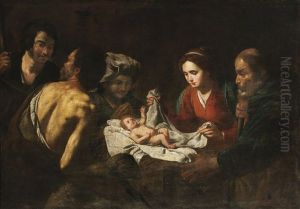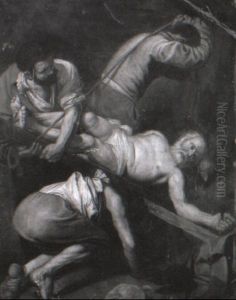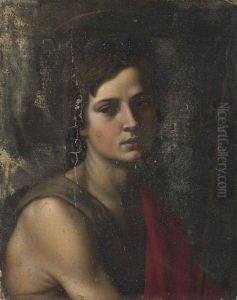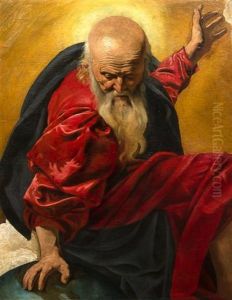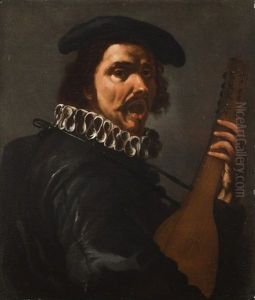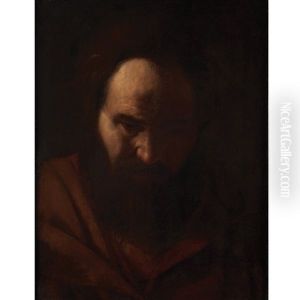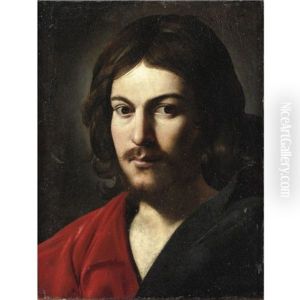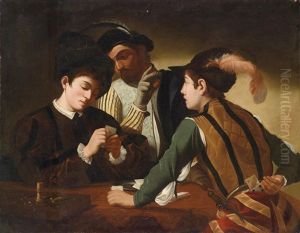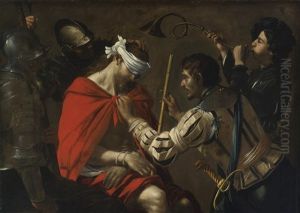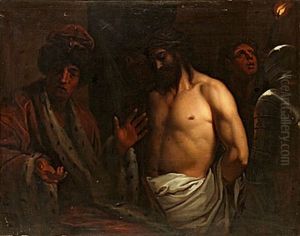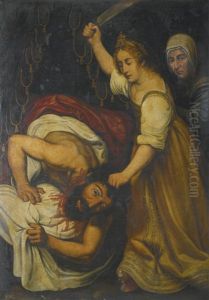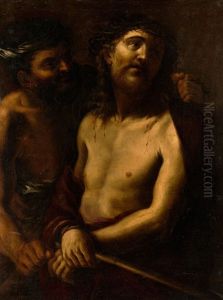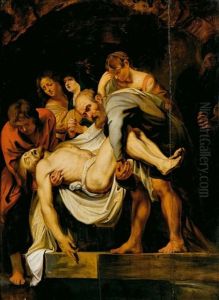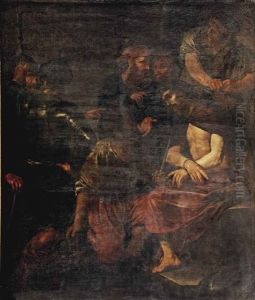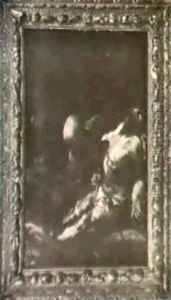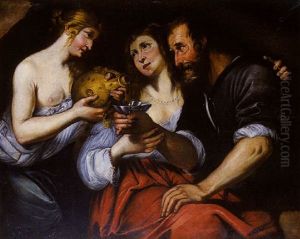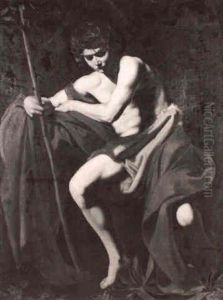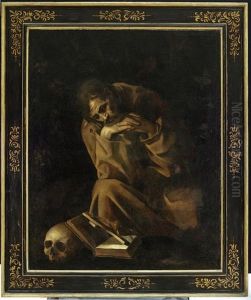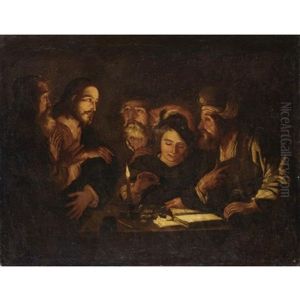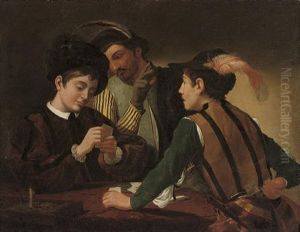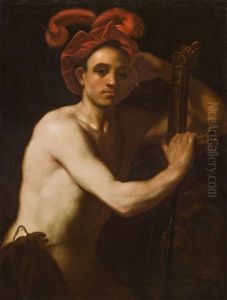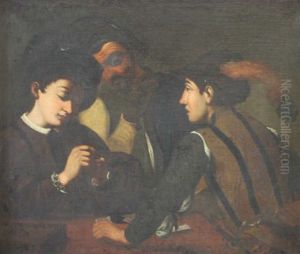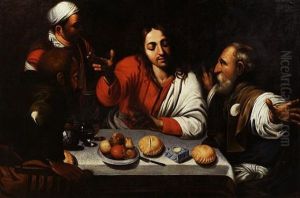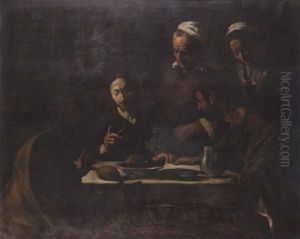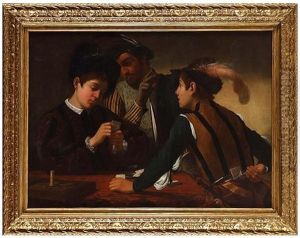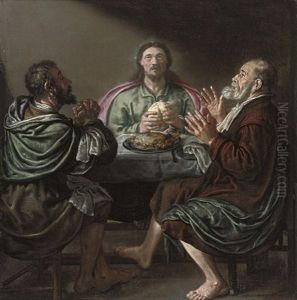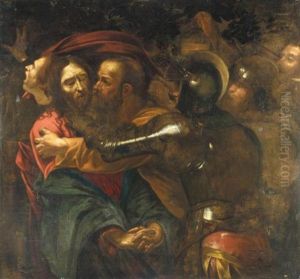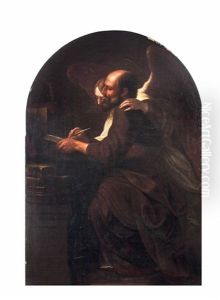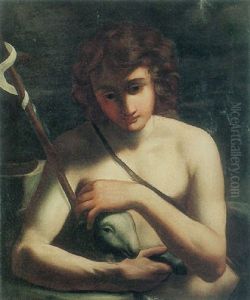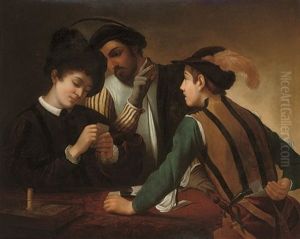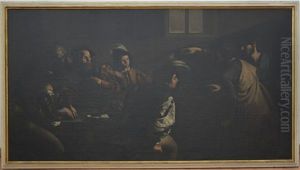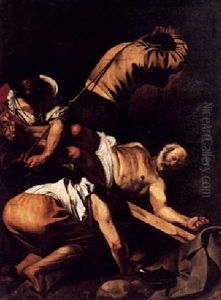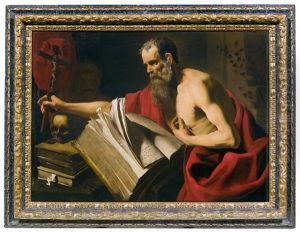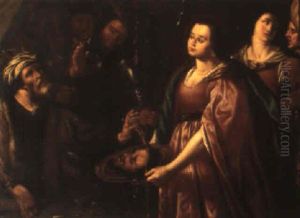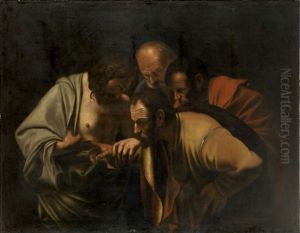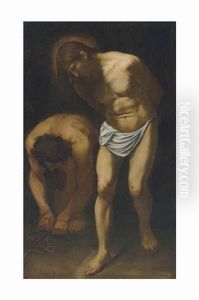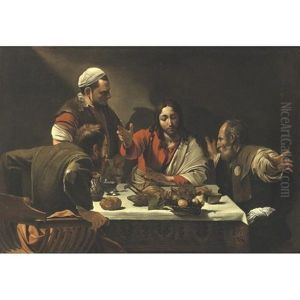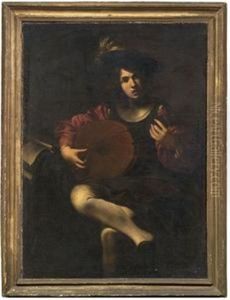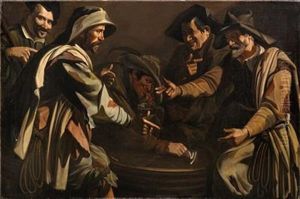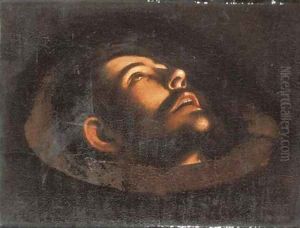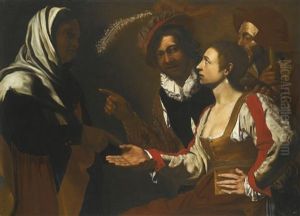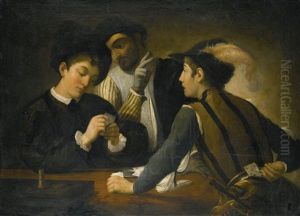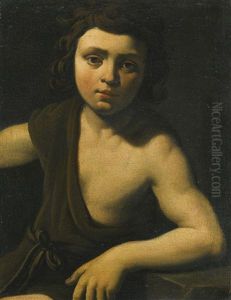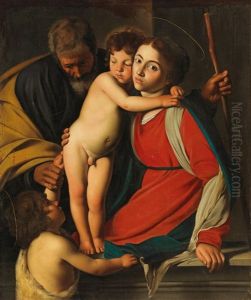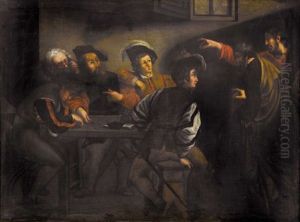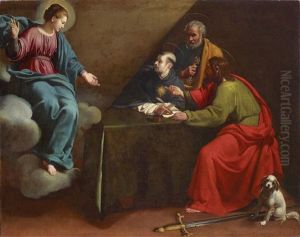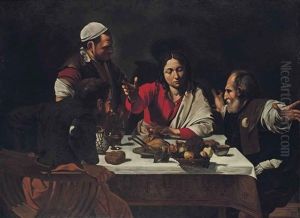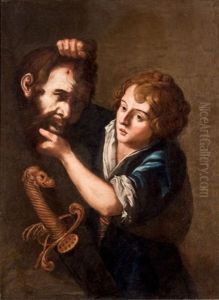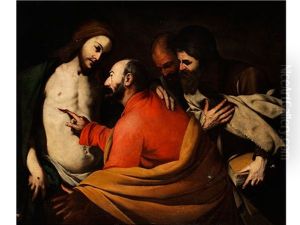Michaelangelo Merisi Da Caravaggio Paintings
Michelangelo Merisi da Caravaggio, known simply as Caravaggio, was a prominent Italian painter who played a key role in the Baroque art movement. Born in 1571 in Milan, Caravaggio was raised in a family with connections to the Sforzas, a noble family, and the Colonnas, a powerful Roman family that would later become his patrons. His father, Fermo Merisi, was an architect/decorator to the Marchese of Caravaggio, which is where the artist would eventually derive his name.
Caravaggio's early life was marked by tragedy; he lost most of his family to the plague when he was just six. Following this, his artistic training began in Milan with the painter Simone Peterzano, who had reportedly been a pupil of Titian. In his early twenties, Caravaggio moved to Rome, where he struggled initially but eventually found work in the studio of Giuseppe Cesari. Here he developed a name for himself painting flowers and fruit, but he aimed for more significant commissions.
Caravaggio's reputation was established with works such as 'The Calling of Saint Matthew' and 'The Martyrdom of Saint Matthew', which he created for the Contarelli Chapel. His style was revolutionary for the dramatic use of chiaroscuro, the stark contrast between light and dark that would become a hallmark of Baroque painting. This technique, along with his realistic depiction of human figures, imbued his paintings with a vivid sense of drama and emotional intensity.
His career was prolific, marked by a series of masterpieces, including 'Judith Beheading Holofernes', 'Amor Vincit Omnia', and 'David with the Head of Goliath'. Caravaggio's influence on the art of his time was immense, inspiring a generation of 'Caravaggisti' and later artists across Europe.
However, Caravaggio's life was as dramatic as his paintings. He was notorious for his belligerent nature and was often involved in violent brawls. In 1606, this tempestuous lifestyle caught up with him when he killed a young man in a duel and had to flee Rome with a death sentence on his head. He wandered through various cities, continuing to paint and receive commissions, seeking a pardon for his crimes. Works from this period of his life show a marked change, with themes of redemption and suffering becoming more prominent.
Caravaggio's tumultuous life came to an abrupt end in 1610 at the age of 38. He died under mysterious circumstances in Porto Ercole while reportedly on his way back to Rome after receiving a papal pardon. His death has been attributed to various causes, including fever, lead poisoning from his paints, and a violent altercation.
Caravaggio's legacy is profound, as his innovative use of light and shadow, as well as his naturalistic approach to painting, significantly influenced the development of Western art. His works continue to be studied and revered for their emotional power and technical mastery.
